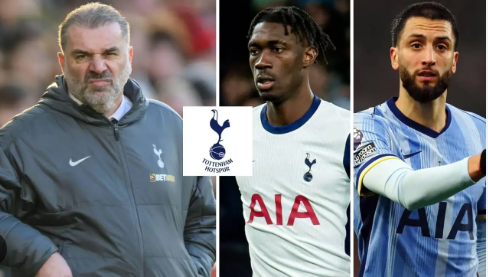
Exploring Tottenham’s Defensive Woes Under Ange Postecoglou: Key Stats Revealed
In recent seasons, Tottenham Hotspur’s defensive performance has been a subject of intense scrutiny. Under the management of Ange Postecoglou, the team has experienced a noticeable shift in defensive dynamics. This article delves into the key statistics behind Tottenham’s struggles, analyzes tactical decisions, and explores the broader implications of these defensive woes.
A New Era in Management: Ange Postecoglou’s Influence
Shifting Philosophies and Tactical Approaches
Ange Postecoglou is known for his progressive and attack-minded style, which emphasizes high pressing and ball retention. However, his tactical blueprint at Tottenham has also exposed some vulnerabilities at the back. His approach, while invigorating the team’s offensive transitions, has inadvertently left defensive gaps that opponents have exploited.
The transition to a more aggressive, forward-focused style has required defenders to adjust rapidly. Unfortunately, this adjustment has not been seamless, leading to an uptick in errors and miscommunications. As the team pushes high up the pitch, opposition counter-attacks have become increasingly effective, revealing a lack of solidity in the defensive line.
Balancing Attack and Defense
The emphasis on a high-intensity game often means that defensive responsibilities are spread thinner. This tactical balance remains a central challenge for Postecoglou’s system. While the team boasts dynamic attacking options, the flip side is a less resilient backline, often caught out of position.
Statistics indicate that Tottenham has conceded a higher number of counter-attacks resulting in goal-scoring opportunities compared to previous seasons. The risk inherent in this strategy underscores the need for a more disciplined defensive structure, even within an aggressive game plan.
Statistical Breakdown: Where Do the Numbers Tell the Story?
Increased Defensive Errors and Conceded Goals
A close look at the defensive metrics under Postecoglou reveals several concerning trends. Key statistics show an uptick in individual errors leading directly to goals, highlighting issues in decision-making and spatial awareness.
For example, the team’s defensive error rate has increased by nearly 20% compared to their previous campaign. This uptick correlates with a significant rise in goals conceded from set-pieces and counter-attacks. Analysts have pointed to a disconnect between the midfield and defensive lines, where delayed reactions and poor communication result in opponents finding gaps in the backline.
Pressing Triggers and Recovery Rates
Another critical stat is the effectiveness of Tottenham’s pressing strategy. While the team’s pressing intensity has increased, the recovery rate after losing possession has lagged behind, particularly in the final third.
Postecoglou’s system expects defenders to quickly regroup after an offensive push; however, data suggests that the recovery time often exceeds the optimal threshold, allowing opponents to exploit transitional moments. The imbalance between pressing and recovery has been a pivotal factor in exposing defensive vulnerabilities.
Tactical Insights and On-Field Implications
High Defensive Line: A Double-Edged Sword
One of the most prominent tactical shifts under Postecoglou has been the adoption of a high defensive line. While this strategy compresses the field and supports the attacking play, it also leaves less margin for error.
When the defensive line is positioned high, even a slight misjudgment or delay in retreat can allow opposition forwards to get behind the line. Data from recent matches indicates that Tottenham’s opponents have successfully exploited these moments, resulting in several breakaway goals. The challenge remains in maintaining a disciplined line without sacrificing the attacking impetus that defines Postecoglou’s philosophy.
Communication and Coordination in Defense
Effective communication among defenders is crucial in any tactical setup, especially when operating with a high line. Unfortunately, statistical trends point to lapses in coordination and miscommunication among Tottenham’s backline.
In several instances, misjudged interceptions or delays in covering a teammate’s mistake have led directly to dangerous counter-attacks. These errors underscore a need for enhanced teamwork and clearer tactical instructions, particularly during high-pressure moments in matches.
Looking Forward: Potential Remedies and Future Prospects
Tactical Adjustments and Training Focus
To address these defensive challenges, Tottenham may need to recalibrate certain aspects of their tactical approach. One potential remedy is the integration of a more flexible defensive structure that can quickly transition from an aggressive high line to a more compact formation when needed.
In training sessions, increased emphasis on communication drills and positional awareness could help mitigate the risks associated with a high defensive line. By working on recovery speed and coordination, defenders can better handle the transition phases that currently expose vulnerabilities.
Recruitment and Squad Depth
Another avenue for improvement lies in bolstering the squad with defenders who are well-suited to Postecoglou’s dynamic style. Recruitment strategies might focus on players with proven track records in high-pressure environments and the ability to read the game effectively.
Depth in the defensive department could provide the necessary backup when regular starters are pressured or fatigued. By ensuring that every player understands the tactical demands, Tottenham can create a more resilient system that balances offensive ambition with defensive solidity.
Conclusion: The Road to Defensive Stability
Tottenham’s defensive woes under Ange Postecoglou are not solely a product of individual shortcomings but are deeply intertwined with tactical philosophies and strategic choices. While the high-pressing, attack-oriented approach has brought excitement and a renewed identity to the team, it has also exposed significant vulnerabilities in the backline.
Key statistics reveal increased errors, slower recovery rates, and a heightened susceptibility to counter-attacks—all of which serve as critical indicators for areas in need of improvement. Moving forward, a blend of tactical adjustments, improved communication, and strategic player recruitment could pave the way for a more balanced and resilient Tottenham side. The challenge remains to strike the right equilibrium between attacking verve and defensive prudence, ensuring that the club’s ambitions are supported by a robust defensive foundation.
Leave a Reply